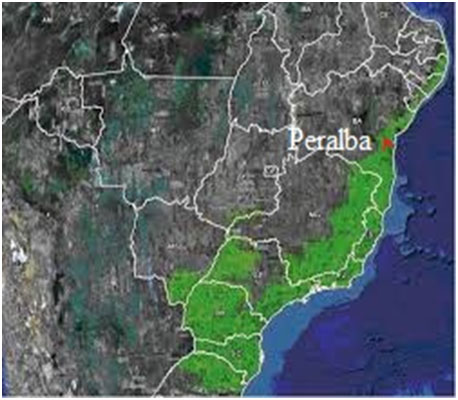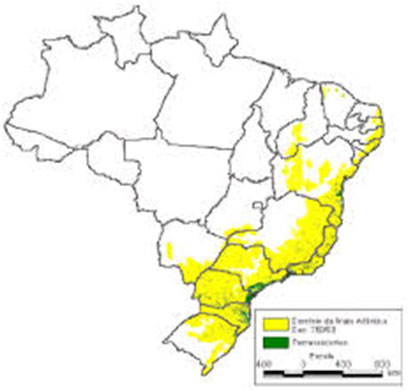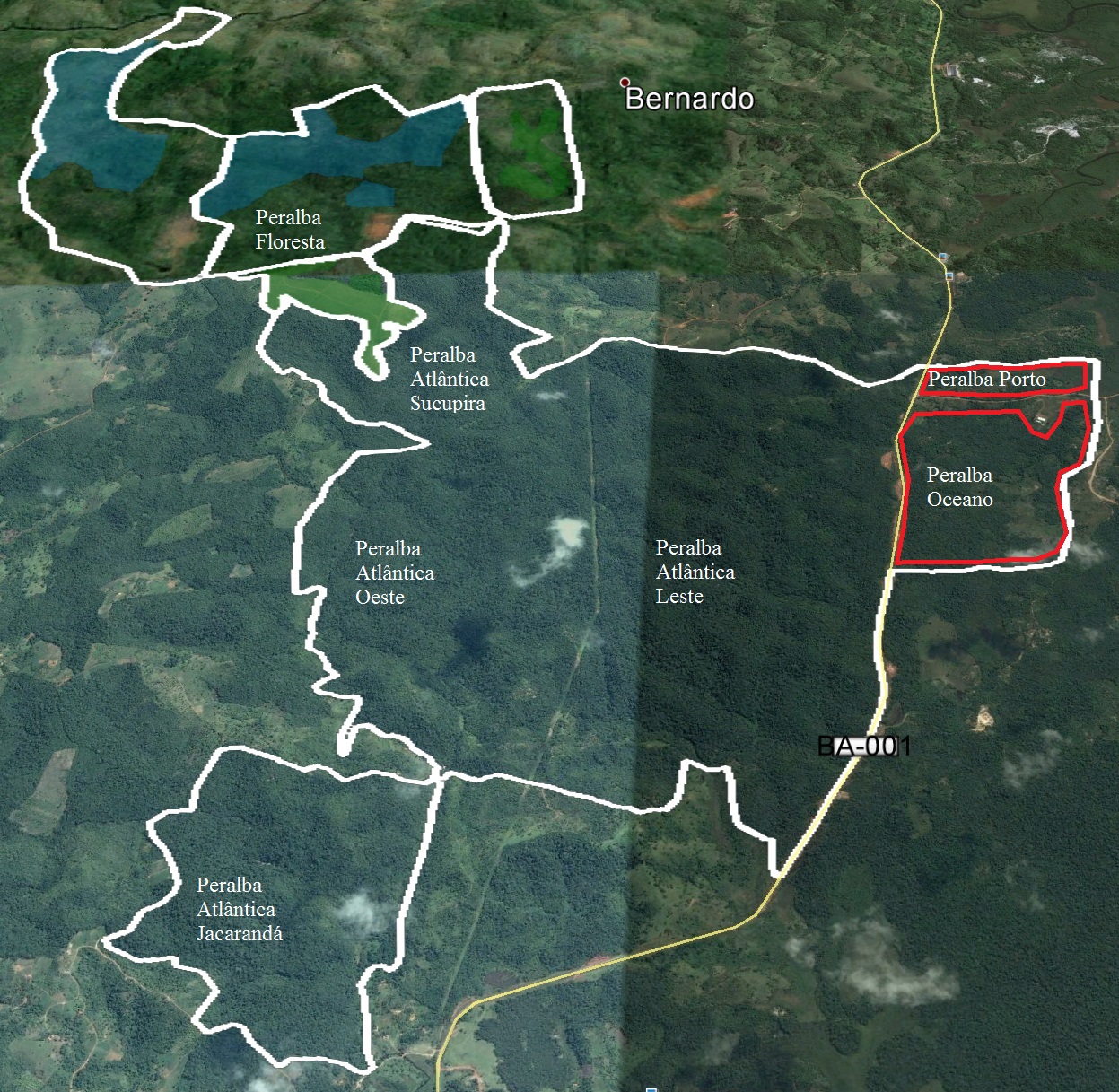Our Ecosystem
Few people are aware of what the Atlantic forest is all about. It is an important part of the ecosystem and vital to preserve. Even fewer know where the Peralba Farm is located in this ecosystem and why we dedicated ourselves to preserve it.Here we shall explain why we care so much.
Starting from the official literature, here are some addresses to begin getting information:
- www.mma.gov.br/biomas/mata-atlantica
- www.sosma.org.br
- www.suapesquisa.com/geografia/…/mata_atlantica.htm
- www.rainforests.mongabay.com/mata-atlantica/mata-atlantica.html
- https://www.nybg.org/bsci/res/bahia/SB-Fores.html
- https://pt.wikipedia.org/wiki/Mata_Atl%C3%A2ntica
A Google search will open up much more information to those who would like to look at these issues.
The Atlantic Forest: a summary

The Atlantic forest covered an area of approximately 1.315.460 square kilometers on the coast of Brazil, touching 17 states: Rio Grande do Sul, Santa Catarina, Paraná, São Paulo, Goiás, Mato Grosso do Sul, Rio de Janeiro, Minas Gerais, Espírito Santo, Bahia, Alagoas, Sergipe, Paraíba, Pernambuco, Rio Grande do Norte, Ceará e Piauí).
Today only 8.5% of the original forest remains, when counting areas above 100 hectares. Summing up all patches above three hectares, the percentage is 12.5%. The Peralba Farm, with its Nery 2.000 hectares is a rare place indeed. We must emphasize that the Atlantic Forest is a world hotspot,rich in still unknown bio diversities. It is also one of the areas which is most threatened to disappear. To protect such areas, theAtlantic Forest was declared a Biosphere Reserve by UNESCO and National Patrimony by the Brazilian constitution of 1988.
Phytol–physiognomy of the Atlantic Forest biomass

As defined by the CONAMA (Conselho Nacional do MeioAmbiente) in 1992:
Dense Ombrophily forest (Bahia)
Open ombrophily forest
Mixed Ombrophily forest
DeciduousSeasonal Forest
Semi-deciduous Seasonal Forest
Swamps (Bahia)
Restingas
High-level Fields
The Atlantic Forest where thePeralba farm is situated encompasses point 1 and 6 above.
The bio-divisions of Peralba’sAtlantic Forest

A study conducted by a researcher from the University of Viçosas, Dr Reis, divided our forest into seven regions or areas of similar characteristics:
PeralbaFloresta –this areaencompassestheNorth-most part of the Peralba Farm. This is where we plan to build the hospitality centre of the future Eco-resort. It is situated on the first boulders of the continental shelf and includes the lime and coffee plantations. It is a classic dense ombrophily area, but is separated by many open field with cattle pastures and other subsistence crops.A wide tar road separates it from east to west and allows excellent access from outside the farm.
PeralbaAtlânticaSucupira – is a mixed ombrophily area and we consider it the entry door to the main preservation area. TheSucupiraRiver and the Tirirí rapids begin here. Trees are immense and the canopy very dense. Here are the vestiges of the house of Mae Bernarda, the mythical figure of a freed slave that became the centre of a strong local lore.
PeralbaAtlânticaOeste – is a classic exampleof dense ombrophily forest. Limited on its left side by the Tirirí river, it encompasses the Paradise Valley on the extreme south of the area, close to the three immense waterfalls of the Tirirí.
PeralbaAtlânticaLeste – is a combination of dense and deciduous areas, with very dense vegetation and home tomany animals. It is the most protected area of the Peralba. Numerous trails still crisscross the forest where slaves and mules were supplying sugar cane to the mills of Coronel Vianna, the landlord, if nota war-lord of past generations.
PeralbaAtlânticaJacarandá – is the area we acquired and has similar characteristics to the PerlabaAtlanticaOeste. TheUrubu fall resides there, a 60 meter waterfall from a river that starts inside the area.
PeralbaOceano – these are swamps, really flat and influenced by the strong ocean tides.
Peralba Porto – is a mixture of swamps and open ombrophily forest. Here is the old port of the ‘Vianna’where, for centuries,wood and sugar was shipped to Salvador.

There is so much more than a map can show in this forgotten corner of paradise! We have dividedthis presentation into eight chapters:
Atlantic Forest (revisited)
Ombrophily coastal forest of Bahia
Bahian swamps
The Peralba’ Atlantic Forest
Peralba rivers and creeks
Peralba flora
Peralba fauna
Peralba human fauna

.jpg)
.jpg)
.jpg)
.jpg)
.jpg)
.jpg)
.jpg)
.jpg)
.jpg)
.jpg)
.jpg)
.jpg)
.jpg)
.jpg)
.jpg)
.jpg)
.jpg)
.jpg)
.jpg)
.jpg)